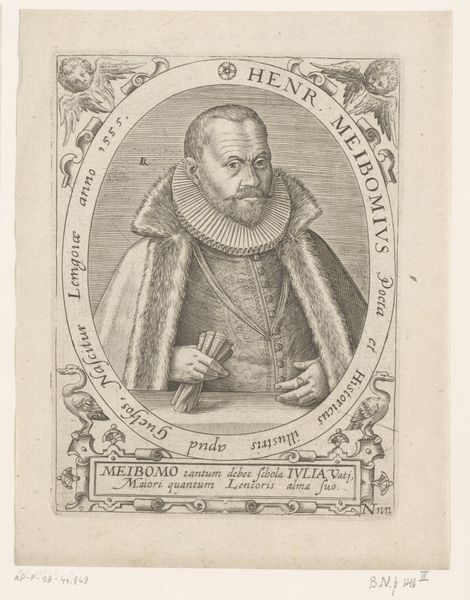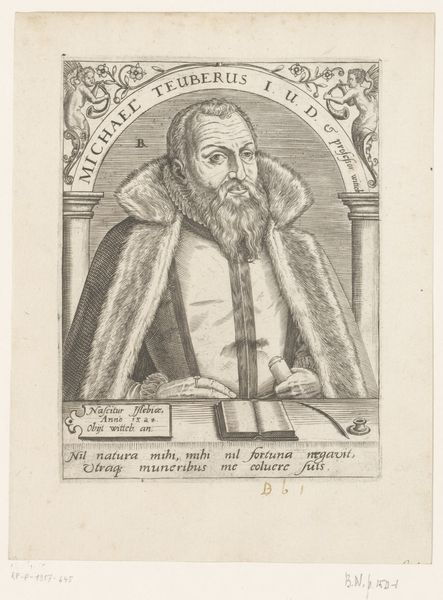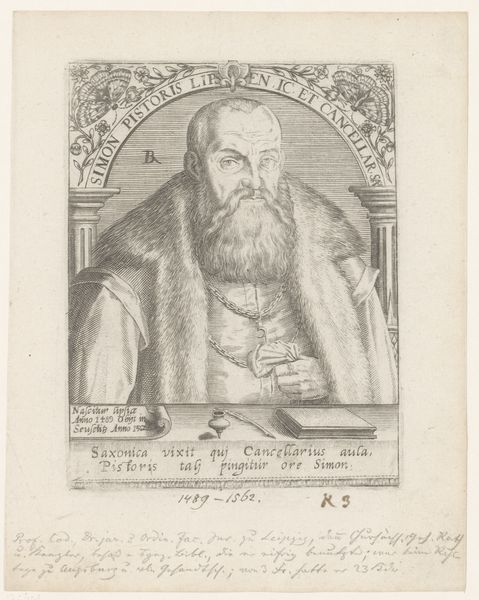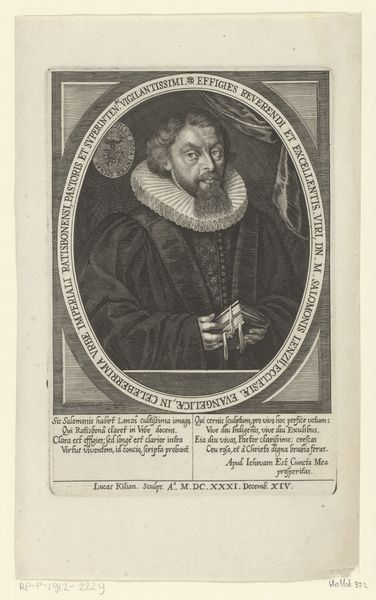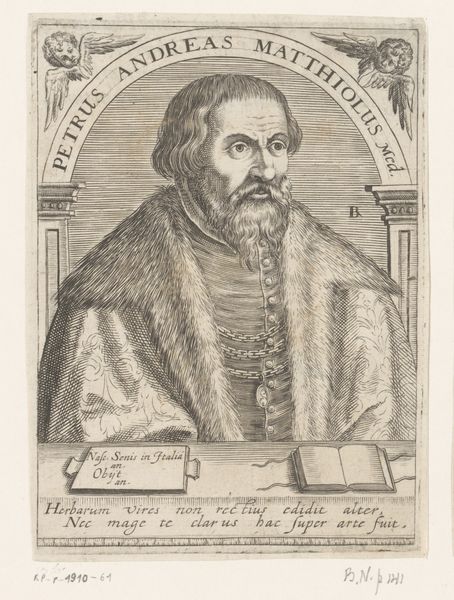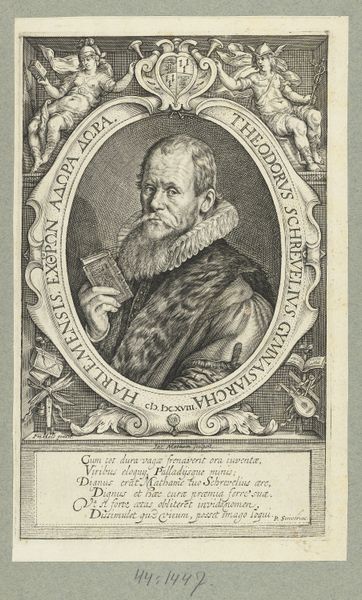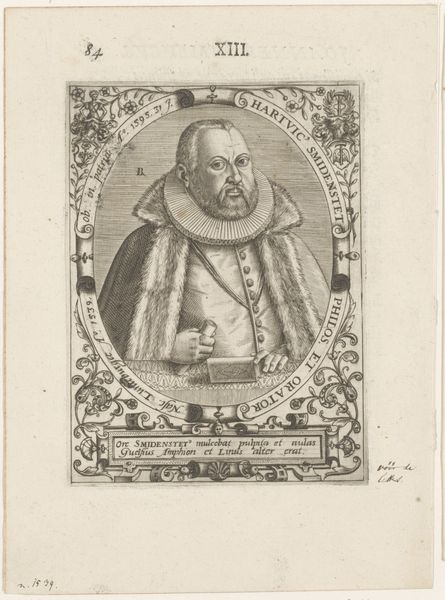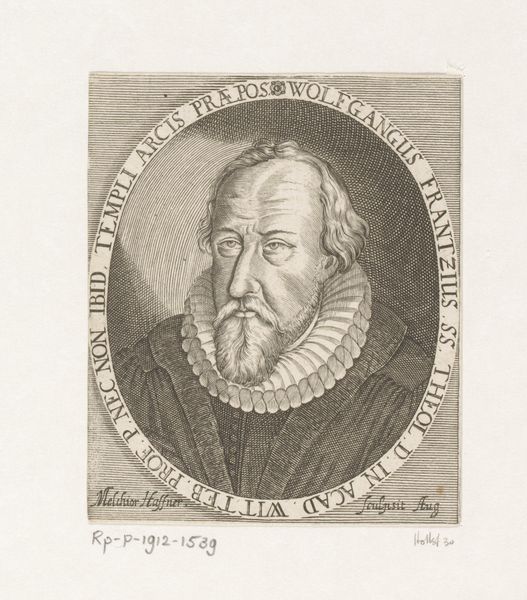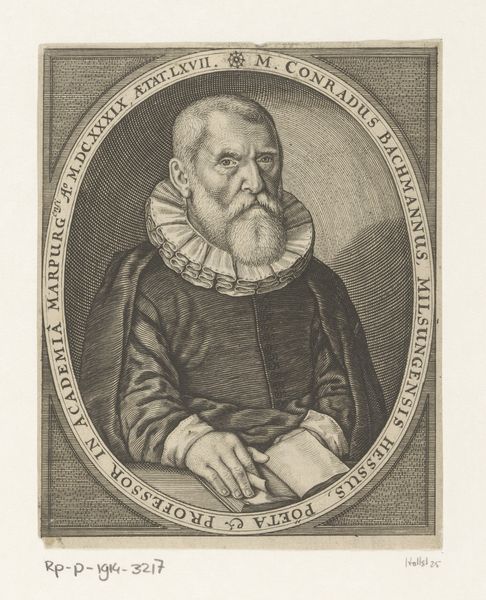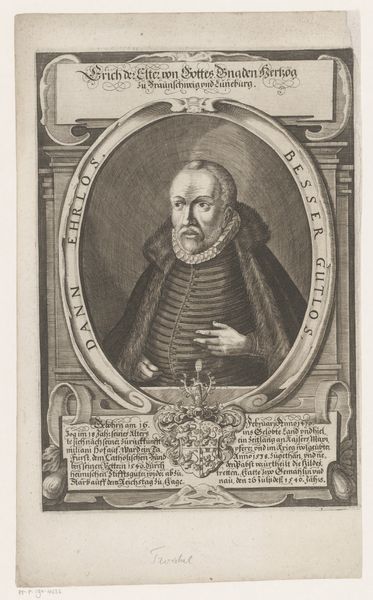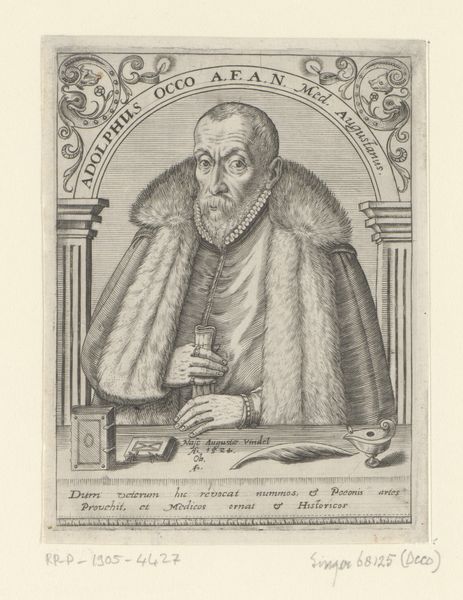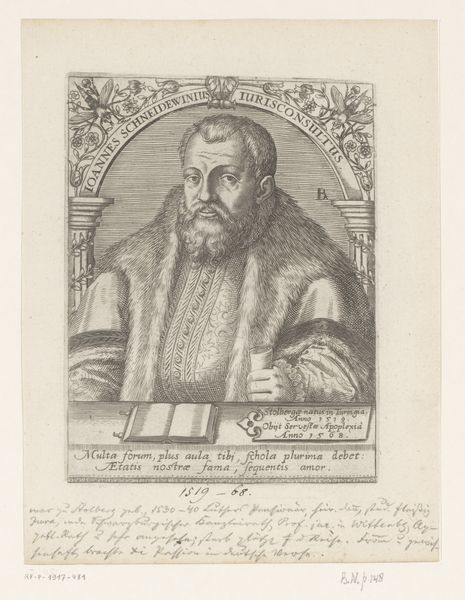
print, engraving
#
portrait
#
baroque
# print
#
mannerism
#
figuration
#
history-painting
#
engraving
Dimensions: height 142 mm, width 108 mm
Copyright: Rijks Museum: Open Domain
Curator: Here, at the Rijksmuseum, we have a compelling portrait of Matthew Wesenbeck, created between 1597 and 1599. Robert Boissard captured Wesenbeck’s likeness through the medium of engraving. Editor: My initial impression is of controlled power. The detail, rendered through the printmaking, offers us a rich depiction of the sitter's presence, but also communicates something of his position. The ornamentation and embellishments feel significant. Curator: Indeed. The artist presents us with several layers of symbolism. Look closely at the scrollwork above Wesenbeck's head, how the putti, winged cherubic figures, allude to classical imagery. Even the architectural elements function symbolically. This layering ties into the visual language of the late 16th century. Editor: But I can’t help but notice the emphasis on wealth and status here. His fur-lined coat, the multiple chains—they speak to a very particular kind of privilege and the performative nature of the time. Do you agree the rendering conveys societal position just as much as it captures individual identity? Curator: Absolutely, and the inscription below the image acts as an allegory. In Latin, it elevates Wesenbeck's position as a "priest of divine law", and further praises him, saying no one taught this subject more justly, or better than him. It all points to a narrative crafted to not only represent but elevate Wesenbeck. Editor: Given Wesenbeck's profession – law, then seen as linked to religious doctrine – do you think his image can still carry this meaning in a contemporary setting, disconnected as we are from that social order? Are we able to see how such symbols and rhetoric functioned to grant someone legitimacy and respect? Curator: Certainly. These symbols still resonate. We read power and authority through specific visual cues – clothing, pose, surrounding iconography. What perhaps shifts is our acceptance or critique of these established codes. We can see them both as powerful historical signifiers, but we should also see their cultural impact. Editor: This image really opens up questions about power, knowledge, and representation. The portrait reminds us of how art is used to shape and reinforce the hierarchies we often take for granted. Curator: It is a striking image, open to so many ways of viewing history and enduring influence.
Comments
No comments
Be the first to comment and join the conversation on the ultimate creative platform.
